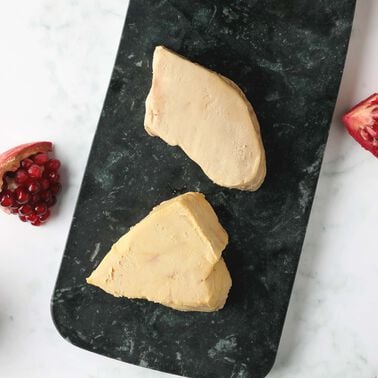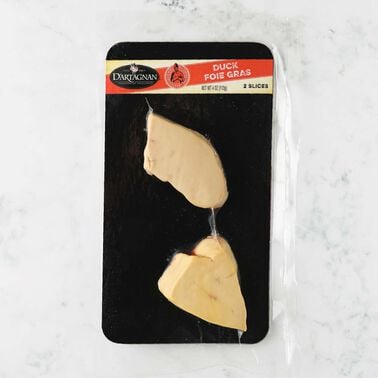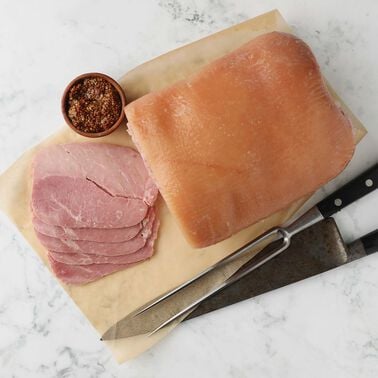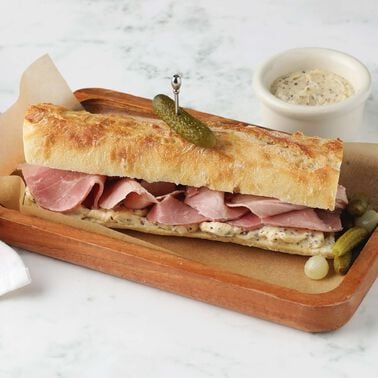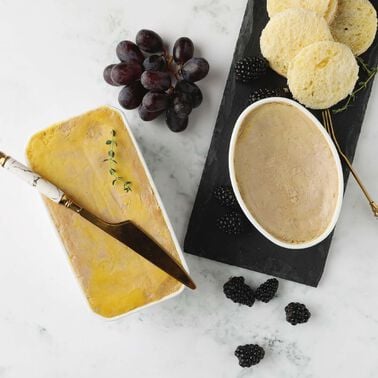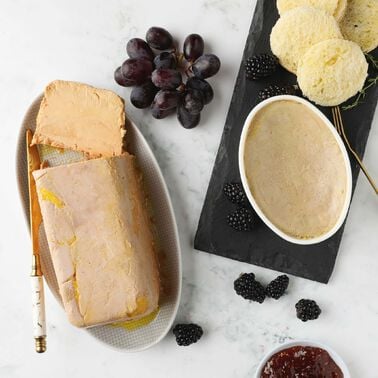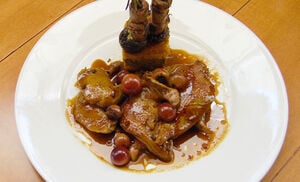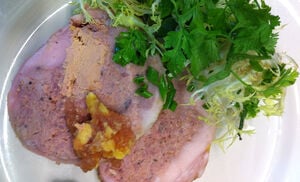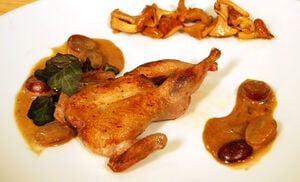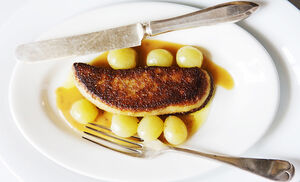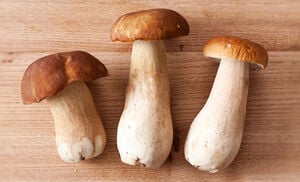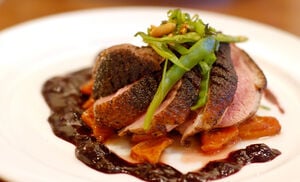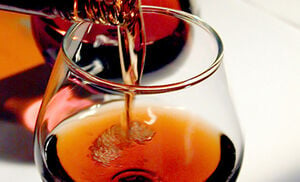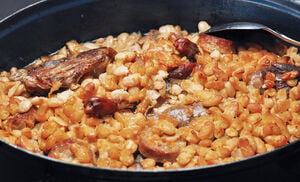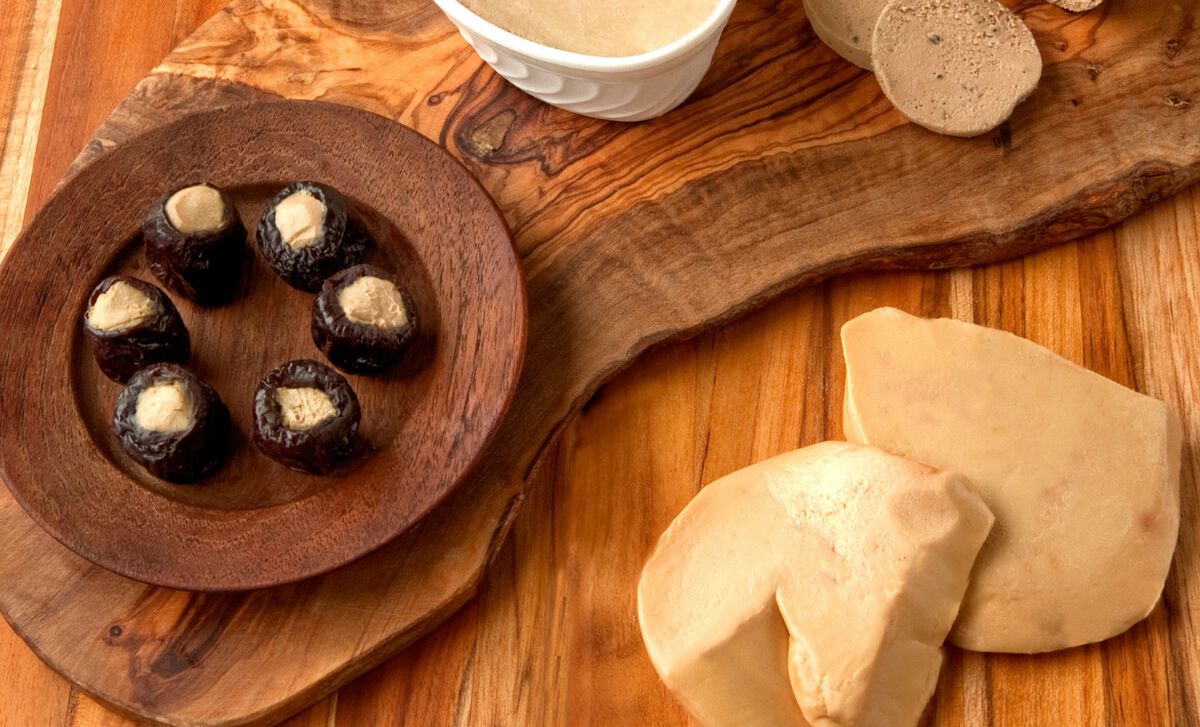
Certainly, in the land of the three Musketeers, and notably of the real-life D’Artagnan, camaraderie and conviviality are as much a part of the meal as the ingredients uses, or wine consumed. Long dinners with plenty of wine, shared stories, and laughter are a vital part of digesting your meal, and a huge part of traditional Southwestern dining.
Foie Gras
What discussion of Southwest France would be complete without foie gras? Literally, the “fatty liver” of a duck that has been specially fed for the last weeks of its life, foie gras is an often misunderstood part of French cuisine. Waterfowl have a natural propensity to gorge themselves before leaving on long migratory flights. They store the fat in their liver, which serves as a gas tank, and under the skin, which protects them from the cold at high altitudes. Humans discovered this fattened and delicious liver while hunting migratory ducks and geese, and soon found a way to reproduce it when the fowl was domesticated. The first record of fattening ducks is in Egyptian tombs, where vivid paintings depict the special feeding. Since the esophagus of a duck is thickened to protect it from harm when swallowing whole fish, frogs and other prey, it is impervious to pain. A small funnel slipped into the mouth of the duck delivers a quick burst of mashed corn directly to the gullet. This high-calorie diet reproduces the natural process of gorging and causes the liver to expand and grow fatty.
The Southwest of France produces the most foie gras in all of France, which is the largest foie gras producer in the world. Foie gras markets are common in the Southwest, and the creamy, silky liver can be enjoyed in terrines, mousses, soups, stuffed into poultry, sliced and seared, and in many creative ways that the chefs of the region continue to imagine. Learn more about the history of foie gras and how to cook it.
Prunes
This little black dried fruit has been part of the gastronomic heritage of the Southwest for centuries. Brought by the Greeks and Romans from China, and planted all through the Mediterranean, the plum holds a special place in the city of Agen, where the famous Prune d’Ente trees produce luscious plums that are dried into the renowned pruneaux d'Agen, or Agen prune. These particular plum trees were developed in the 13th century by Benedictine monks who crossed the existing trees with a variety the Crusaders brought home from Syria. The tree survived harsh winters, world wars and triumphed in the 21st century when it was recognized in 2002 by the EU with the Indication Géographique Protégée. Everyone in France knows that Agen is the place for the sweetest, juiciest, plumpest prunes, and a visit there would reveal a myriad of ways to eat prunes. Roasted with meats like pork, lamb or rabbit, coated in chocolate, stuffed with foie gras or Roquefort cheese, soaked in Armagnac, wrapped in bacon, studding pork and duck terrine, in ice cream, pies and pastries, or simply eaten out of hand on a cheese board, the prune is a ubiquitous part of life in Agen, and a beloved fruit of Southwest France.
Cheese
Roquefort, called “the king of cheeses and the cheese of kings,” is perhaps the best-known cheese from the Southwest region, with its creamy, soft texture and blue-green mold marbled throughout. The famous limestone caves of Combalou keep constant temperature and humidity levels year-round, perfect for the mold to do its noble work on this sheep’s milk cheese. This tangy and salty cheese can be enjoyed in many ways, but pairs wonderfully with a sweet fruit, like figs or melon, and a glass of Sauternes wine. Roquefort is one of only two sheep’s milk cheeses granted AOC (Appellation d’origine controlee) status, the other being Ossau-Iraty, a cheese made in the French Pyrénées, in Basque country.
Originally made by the shepherds of the region, all Ossau-Iraty cheese is made from unpasteurized sheep’s milk from Manech and Basco-Bearnaise ewes and aged a minimum on 90 days. The sheep are herded into the mountains in spring to nourish themselves on high-altitude pasture. Ossau-Iraty is a gentle cheese with good balance, a slightly nutty flavor with sweet buttery notes, and a smooth finish. It pairs well with the wines of the region like Madiran, though Merlot will work in a pinch.
Goats were introduced to Southwest France by the Moors in the 8th century, and they thrived in the region. Given the number of caves and the tradition of cheese making, it is no wonder that the Southwest has contributed many great goat cheeses to the world, including Cabécou of Quercy, Tome d’Acquitaine, Buche de Poitou, and Valençay.
